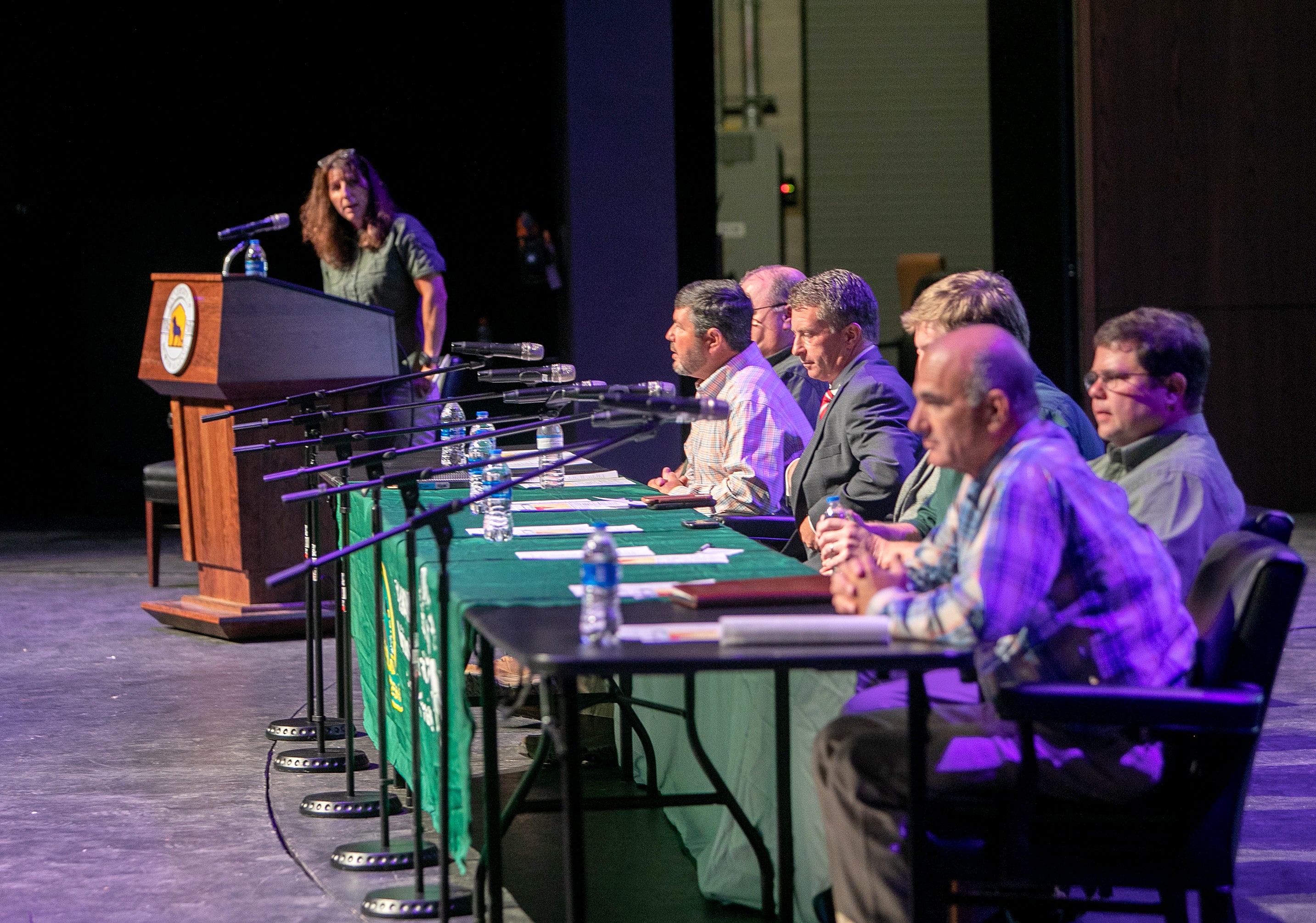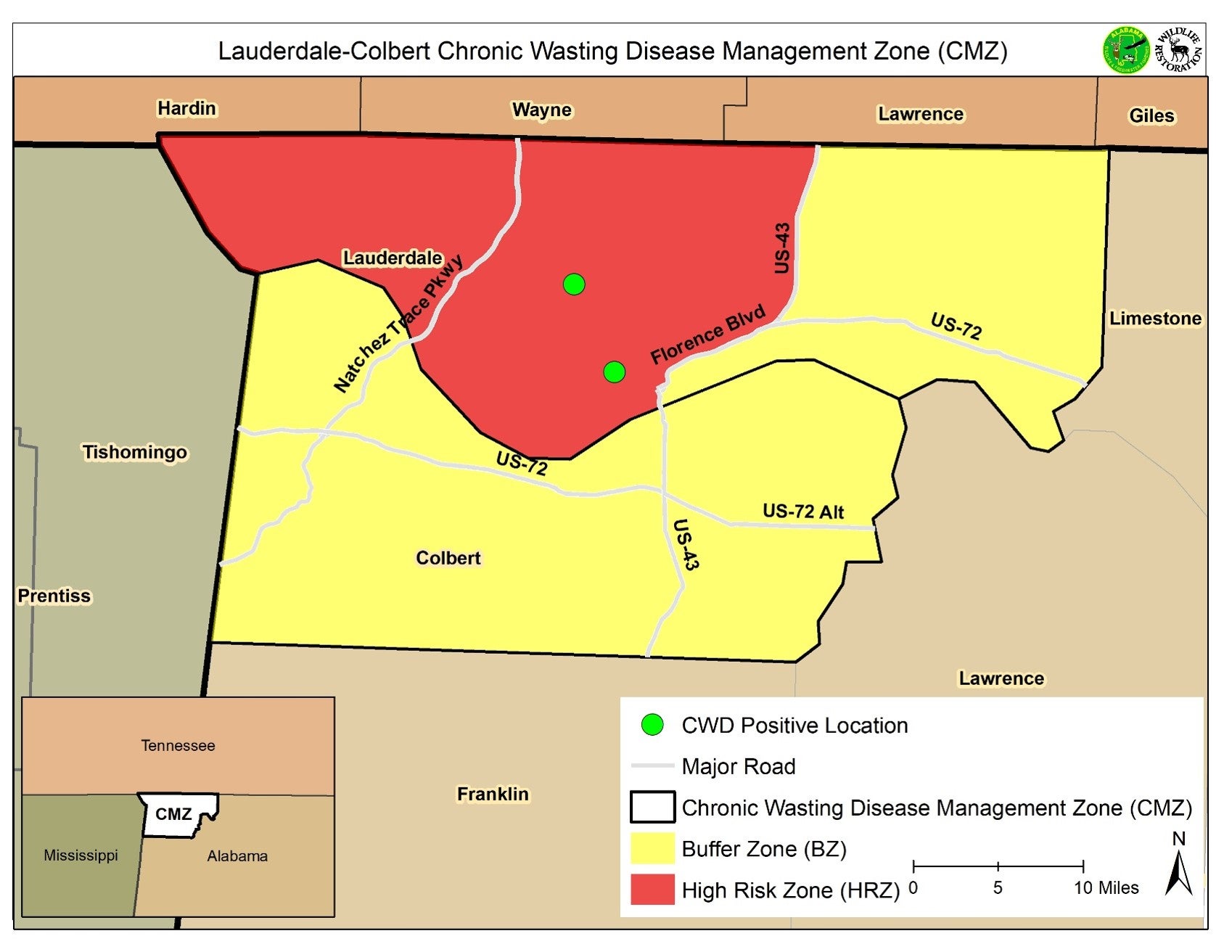By DAVID RAINER, Alabama Department of Conservation and Natural Resources
One of the messages the Alabama Department of Conservation and Natural Resources’ (ADCNR) Wildlife and Freshwater Fisheries (WFF) Division wanted to convey last week at the CWD (chronic wasting disease) public meeting in Florence was to thank Alabama hunters for their response during the 2021-2022 white-tailed deer season.
WFF Outreach Coordinator Marianne Gauldin was among those greeting attendees at the meeting.
“It was great to see so many members of the community interested in the health and future of our wildlife resources,” Gauldin said. “Our staff also appreciates the opportunity to interact with them and openly discuss these topics and further understanding of this disease and related regulations.”
Amy Silvano, Assistant Chief of the WFF’s Wildlife Section, said last week’s meeting was a follow-up from the January 2022 public meeting held when the first case of CWD was confirmed in Lauderdale County in northwest Alabama.
When the first case was confirmed on January 6, an emergency regulation was signed the next day to establish the CWD Management Zone (CMZ) in Lauderdale and Colbert counties, encompassing the high-risk zone (HRZ) of Lauderdale County west of U.S. Highway 43 and the buffer zone (BZ), the remaining area east of Highway 43 in Lauderdale County and all of Colbert County. The emergency regulation also extended the either-sex deer season on all open permit, private, and WMA lands, removed the seasonal and daily bag limits for antlered and unantlered deer, and removed the antler restriction for deer harvest in the CMZ. It became mandatory for any deer harvested within the HRZ to be made available for sampling. Hunters were strongly encouraged that deer harvested in the BZ be sampled. Carcass restrictions were also put in place that prohibited the transport of deer carcasses and deer parts in the CMZ. Deer harvested in the HRZ must remain in the HRZ, and deer harvested in the BZ must remain in the CMZ.
“The reason for relaxing harvest regulations in Lauderdale and Colbert counties for the remainder of the season was to remove barriers for us to get samples,” Silvano said. “We were relying on our hunters to get those samples. We had 30 days left in the 2021-2022 season, so we wanted to engage our hunters, who have always been our best cooperators in managing the deer herd. When we had our first positive, we didn’t know what the extent or distribution of the disease could be in that area.”
Prior to last season's emergency regulation, WFF had received 65 samples from the CMZ as part of their normal CWD surveillance sampling procedures. After the emergency regulation went into effect, a total of 968 samples were collected from hunter-harvested deer in the CMZ, with 499 coming from Lauderdale County and 469 coming from Colbert County. This increased number of samples meant that WFF had access to more information about the distribution of the disease.
“We really do need to thank the hunters for providing us with that information,” Silvano said. “From those 968 samples, it wasn’t the best-case scenario – that we didn’t detect anything else – but we only detected one additional positive from a hunter-harvested deer, which was only a couple miles southeast of the original positive. That did not change any of our lines. It was detected in the HRZ and still 10 miles or more from Colbert County.”
Because the emergency regulation was only in effect for 120 days, it was replaced with a new CWD regulation that went into effect on July 15. The zones and carcass transport restrictions remained the same. Under the new regulation, the baiting or supplemental feeding of deer is banned within the CMZ.
“We put in the ban because, unfortunately, we detected a second case,” Silvano said. “This regulation is put into place to help minimize the risk of disease spread. Baiting and supplemental feeding congregate animals at a certain point. CWD is a highly contagious disease. The carcass transport and movement regulation also helps to minimize the risk of spread.”








